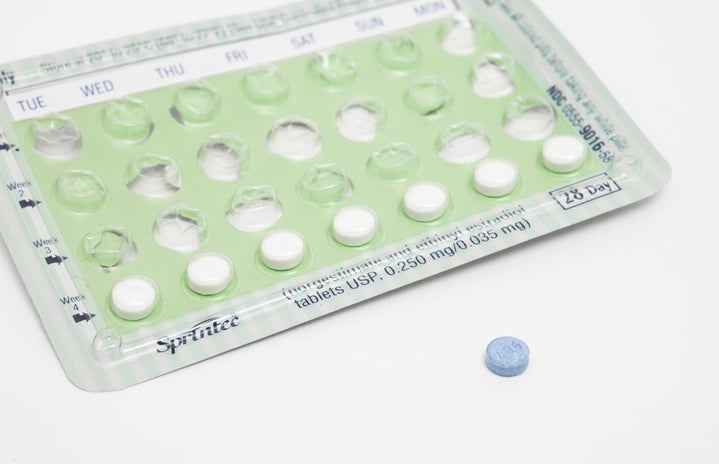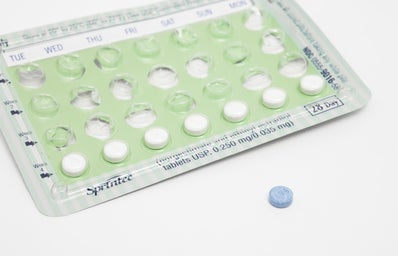A couple years ago, three of my best friends switched from birth control pills to the IUD. In light of the Trump administration’s imminent threat to repeal the Affordable Healthcare Act, we had all talked about how it would be smart to get one sooner rather than later. A few months ago, when I entered a long-term relationship with my boyfriend and started to seriously consider all my options for birth control, my sister, as well as probably every other woman in my life, advised me to get an IUD. Even the Twitterverse chimed in with things like:
“You’ll never have to think about taking a pill again!” “It lasts for 12 years!” “If you don’t have an IUD, get one now because Supreme Court Justice Anthony Kennedy announced he’s retiring!”
It seemed like I had nothing to lose. I did, remember one of my teammates having to skip practice from the post-insertion cramps, and my friend’s roommate popping Midol after she got hers, but aside from that it had been smooth sailing for them, and I had never heard anything else that was negative. Naturally, I assumed it would be the same for me. Boy was I wrong.
At the end of the summer I went in for my appointment. The clinician explained to me everything I had already thoroughly researched, then followed through with the procedure in which I experienced the worst cramps of my life. Several minutes of agony passed, and she informed me she wouldn’t be able to continue because my cervix wasn’t cooperating. She then prescribed me some medication that would somehow facilitate the insertion by giving me even more cramps, and I could come back 24 hours later.
Looking back, I think this must have been a sign the IUD wasn’t for me. Nonetheless I took the medication, returned, successfully got my IUD placed, and proceeded with my life.
Within a few days, acne slowly began to appear on my chin. Thinking it must be stress-related, I ignored it. I was sure it couldn’t be hormonal because I had opted for the non-hormonal copper IUD, also known as Paragard, over the Mirena. The post-insertion cramps continued longer than I expected and occurred on and off pretty frequently, but I didn’t think much of that either.
I woke up one morning approximately a month later in excruciating pain and yet another terrible acne breakout. Almost immediately I decided to go the closest Planned Parenthood to see if they could take a walk-in. They were unable to, because Fridays are always overbooked. Two even-busier Planned Parenthoods later, and I couldn’t take it anymore. I was frustrated, I was in pain, I missed my perfect clear skin, and Planned Parenthood couldn’t schedule me until two weeks from then. Desperate, I headed to the emergency room.
From getting X-rayed to having my blood drawn, they tested everything. Turns out there hadn’t been any type of malfunction with my IUD. It was in the right place, and it was technically doing exactly what it’s supposed to do, except my body wasn’t being very “welcoming” to it, and it was causing me copper toxicity. What I soon learned was that the increase of copper in my bloodstream depleted my zinc levels, which in turn made my skin dry, and gave me headaches, nausea, and acne. On top of that, my body rejecting the IUD led to cramps, stress hormones, and therefore, even more acne. The Paragard is a popular IUD precisely because its non-hormonal, which gives many people reason to believe there are fewer to no side effects. That is in fact the case for many people, but obviously it wasn’t for me.
When the ER physician/literal angel removed the IUD, I felt like a weight had been lifted off my shoulders. I was prescribed birth control to re-regulate my disrupted hormone levels, and I took the first pill the same night. I woke up the next morning feeling a million times better. My skin improved overnight, there were no more headaches or cramps, and I was so relieved.
I never imagined my body would react this negatively to the IUD, especially because it’s such a widely praised birth control method and it’s known for being easy peasy. But the fact is, everyone is different and there is really no way to know for sure if it’ll work for you. I hope that if you do decide to get an IUD it goes a lot better for you than it did for me, but my advice coming out of this experience is to listen to your body more than your research. I had done a ton of research beforehand and paid a lot of attention to the advice of people who’d been in my place. Because I had so much trust in the process and in the feedback from others, I ended up ignoring obvious signs despite all the negative side effects I was experiencing. Many people told me to “wait for another month, maybe it’ll get better” and I’m so glad I didn’t because if I hadn’t gone to get it removed, things would’ve definitely gotten worse. Researching and knowing what to expect is really important and essential, but sometimes things don’t go the way you plan. When it comes to your health, being more conscientious goes a long way.
If you would like to write for Her Campus Mount Holyoke, or if you have any questions or comments for us, please email mt-holyoke@hercampus.com.


